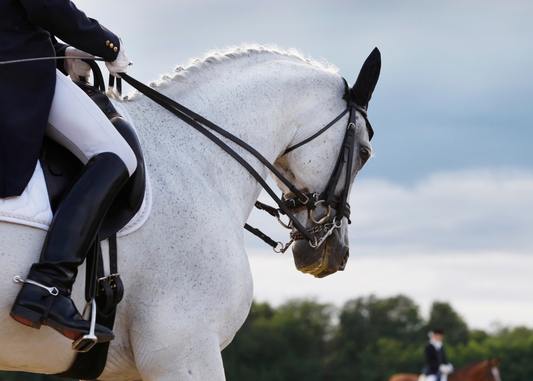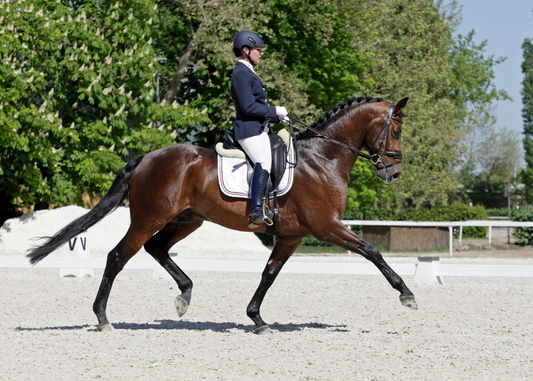The Dressage Training Scale is the foundation of classical riding, offering a structured approach to developing a horse’s athleticism, responsiveness, and overall performance. Whether you're training a young horse or refining an advanced dressage partner, understanding and applying the principles of the training scale can help create a harmonious partnership between horse and rider.

What Is the Dressage Training Scale?
The Dressage Training Scale, also known as the German Training Scale, is a systematic progression designed to guide the training and development of a dressage horse. The scale consists of six interconnected elements:
1. Rhythm (Takt)
2. Suppleness (Losgelassenheit)
3. Connection (Anlehnung)
4. Impulsion (Schwung)
5. Straightness (Geraderichtung)
6. Collection (Versammlung)
Each stage builds upon the previous one, creating a logical and progressive framework for training. However, the scale is not always strictly linear—horses may need to revisit earlier stages as they progress.

Why Is the Training Scale Important?
The training scale provides a roadmap for improving a horse’s physical and mental development, ensuring that training is effective, fair, and structured. By following these principles, riders can develop a horse that moves correctly, responds willingly, and achieves balance, power, and elegance in its work.
The Building Blocks: A Brief Overview of Each Step
1. Rhythm: The foundation of all movement. A correct and consistent rhythm in each gait ensures balance and coordination.
2. Suppleness: A relaxed horse moves freely, allowing for fluidity in movement and a willing attitude toward training.
3. Connection: Achieved through steady, elastic contact, connection ensures effective communication between horse and rider.
4. Impulsion: The development of controlled energy and forward thrust, creating powerful, expressive movement.
5. Straightness: Aligning the horse’s body to develop evenness and balance, preventing one-sidedness.
6. Collection: The pinnacle of dressage training, collection enables a horse to carry more weight on the hindquarters, allowing for more expressive and refined movements.
How to Work Through the Training Scale
While the scale is often visualized as a pyramid, riders should view it as a flexible system. A young or inexperienced horse will spend more time establishing rhythm and suppleness before progressing to connection and impulsion. An experienced horse might focus on refining collection while still addressing straightness and relaxation.
Regular assessments of your horse’s training progress, combined with patience and correct riding, will ensure steady improvement and prevent gaps in development.

Bringing the Training Scale to Life
Incorporating the principles of the training scale into everyday riding can lead to noticeable improvements in performance and communication. Exercises such as transitions, lateral work, and pole work can help reinforce different stages of the scale. Additionally, well-fitting tack, correct rider position, and thoughtful training sessions contribute to successful application.
By embracing the Dressage Training Scale, you set the stage for long-term success—creating a confident, supple, and balanced dressage partner.
Ready to level up?
The beauty of the Dressage Training Scale is that it's never truly finished. These steps work together in a continuous cycle, helping you and your horse grow stronger, more connected, and more expressive with every ride.
Whether you're fine-tuning your rhythm or working toward collection, revisit each stage often and give your horse the gift of thoughtful, balanced training.
Want to dive deeper? Explore the full series:
- Step 1: Rhythm – The Foundation of Dressage Training
- Step 2: Suppleness – Unlocking a Soft, Swinging Horse
- Step 3: Connection – Building the Bridge Between Horse and Rider
- Step 4: Impulsion – TPowering Your Horse From Behind
- Step 5: Straightness – Finding Balance on Every Line
- Step 6: Collection – Elevating the Ride













